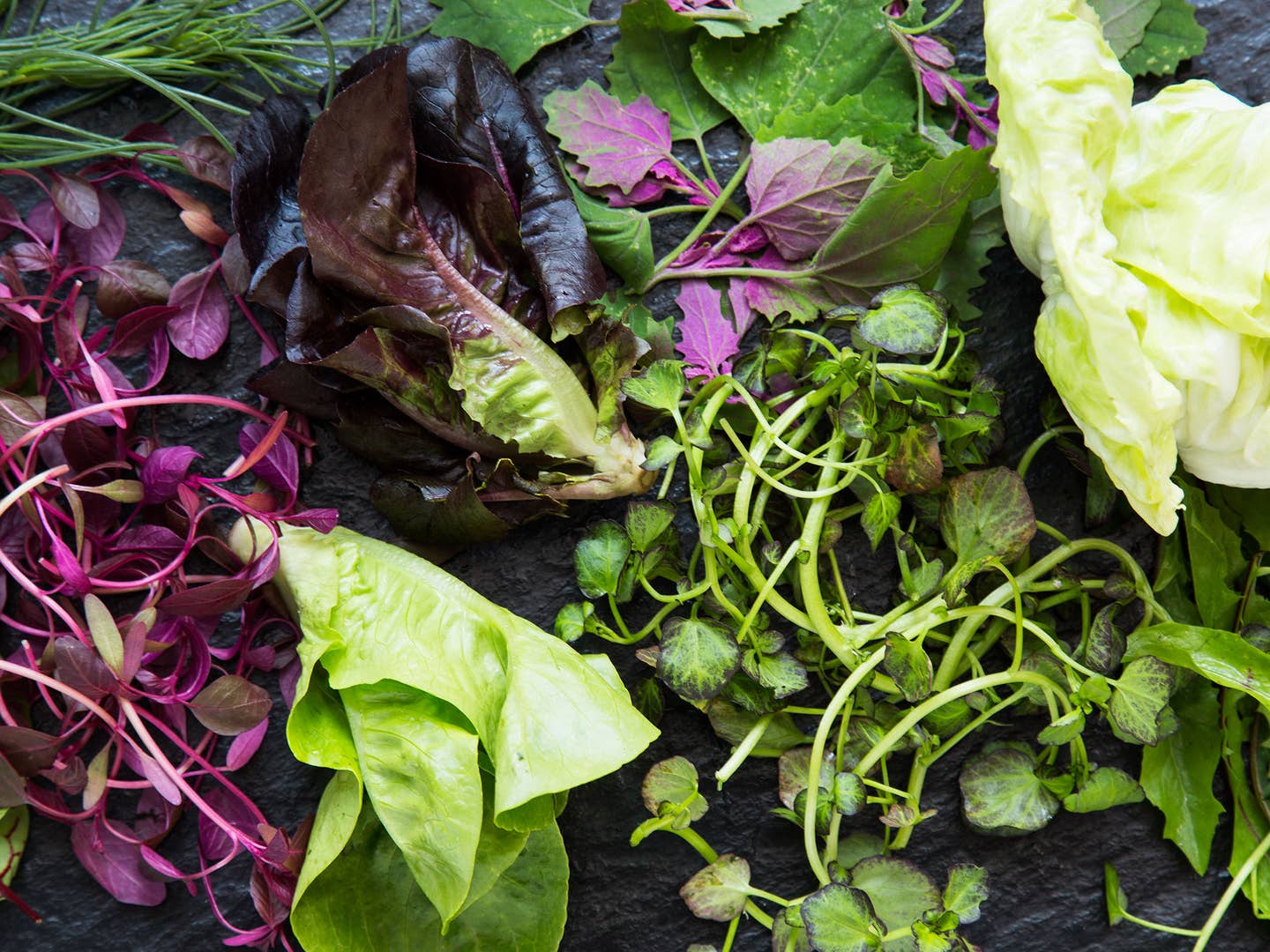
The Elitist’s Guide to Salad Greens
How to shop, prep, and cook with those pretty mystery greens at the market
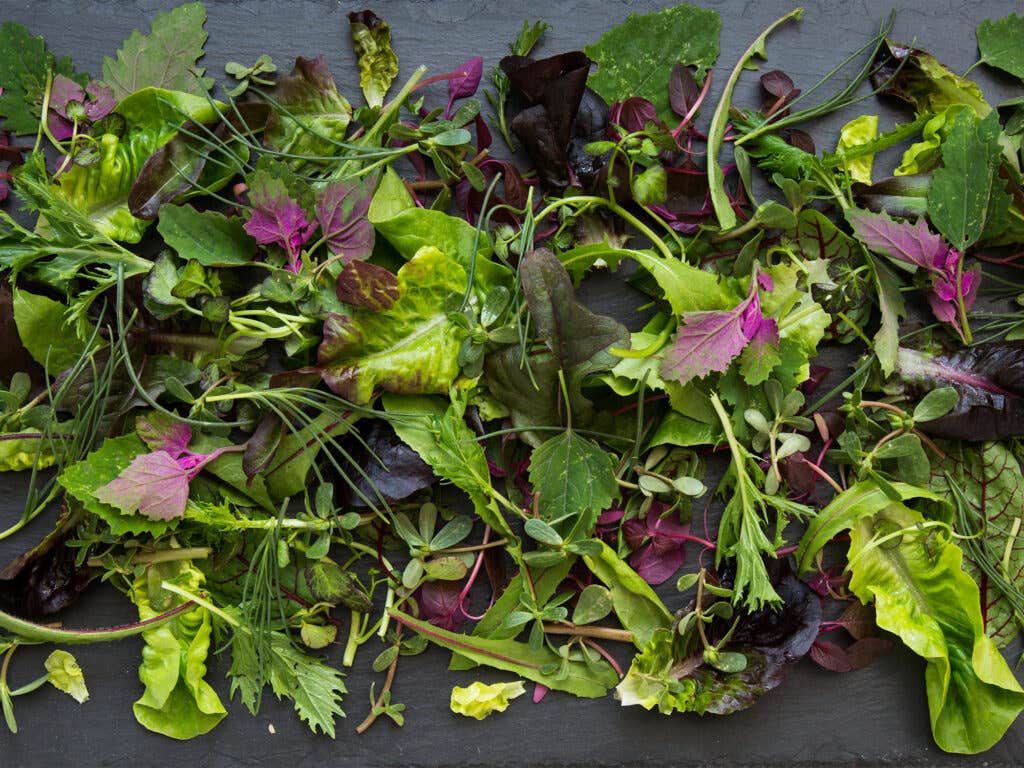
Arugula? Radicchio? Been there, done that. The true salad lover wants something more rare. More flavorful. Full of gorgeous colors and unexpected textures. Fussy? Maybe, but a truly great salad demands truly great greens.
If you’ve ever stopped by a farmstand and wondered what all those exotic-looking greens tasted like—and wondered what to do with them—this guide is your answer. Here’s how to identify those mystery vegetables and the best recipes to put them to work.
Agretti
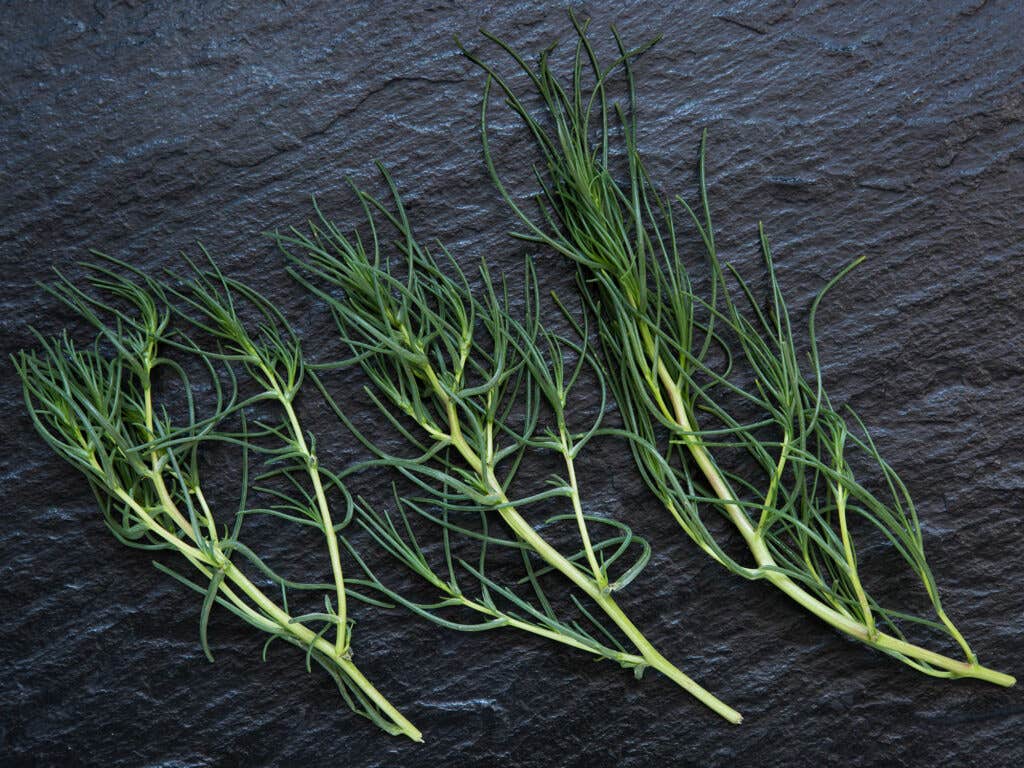
AKA: Monk's Beard, Roscana, Saltwort
Agretti is a succulent native to the Mediterranean that tends to grow in coastal regions; it's a halophyte, which means it does well in salty conditions. The flavor reflects that—a little tart, a little briny.
Look for bunches of these plump fennel frond-looking things during spring and summer, and add them to salads for crunch and acidity. Agretti is often served lightly steamed and drizzled with good olive oil, lemon, and sea salt. Be sure to taste as you season, since it’s kind of salty on its own.
Red Amaranth
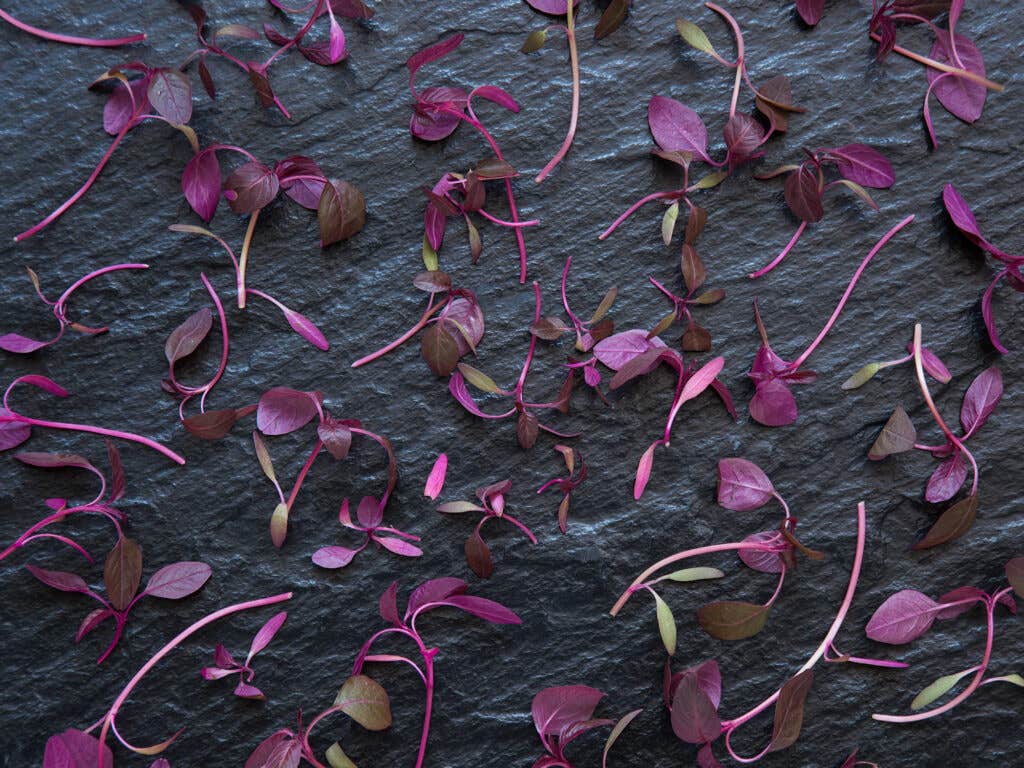
Amaranth grows worldwide, in climates ranging from temperate to tropical, and can even stand a mild drought. It can be found year-round, though the peak season is spring and summer.
The small young leaves are tender, mildly earthy, slightly astringent; larger leaves tend to be more fibrous with a more pronounced earthiness. The delicate leaves are best used to brighten up salads. Cook the big guys like spinach for soups or sautées. They’re flexible.
Red Bok Choy
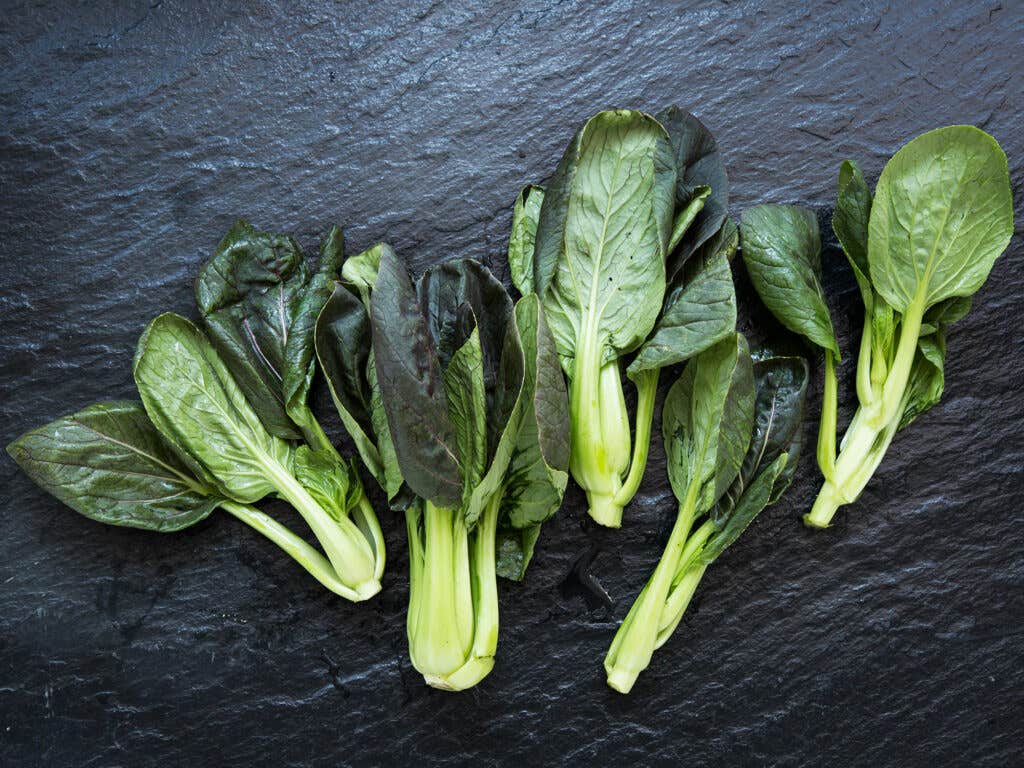
The main thing setting red bok choy apart from its plain green counterpart is the color; the taste and texture are pretty similar. The violet leaves add character and have a more pronounced mustard flavor, but other than that it’s just like any other bok choy: tender leaves with firm and succulent stalks. Red bok choy is available year-round, but is most likely to be found at farmers markets and Asian grocery stores.
What to Cook With It
Grilled Lamb Chops with Ginger Sauce and Bok Choy »
Bok Choy with Garlic Sauce »
Taiwanese Beef Noodle Soup »
Red-Veined Dandelion
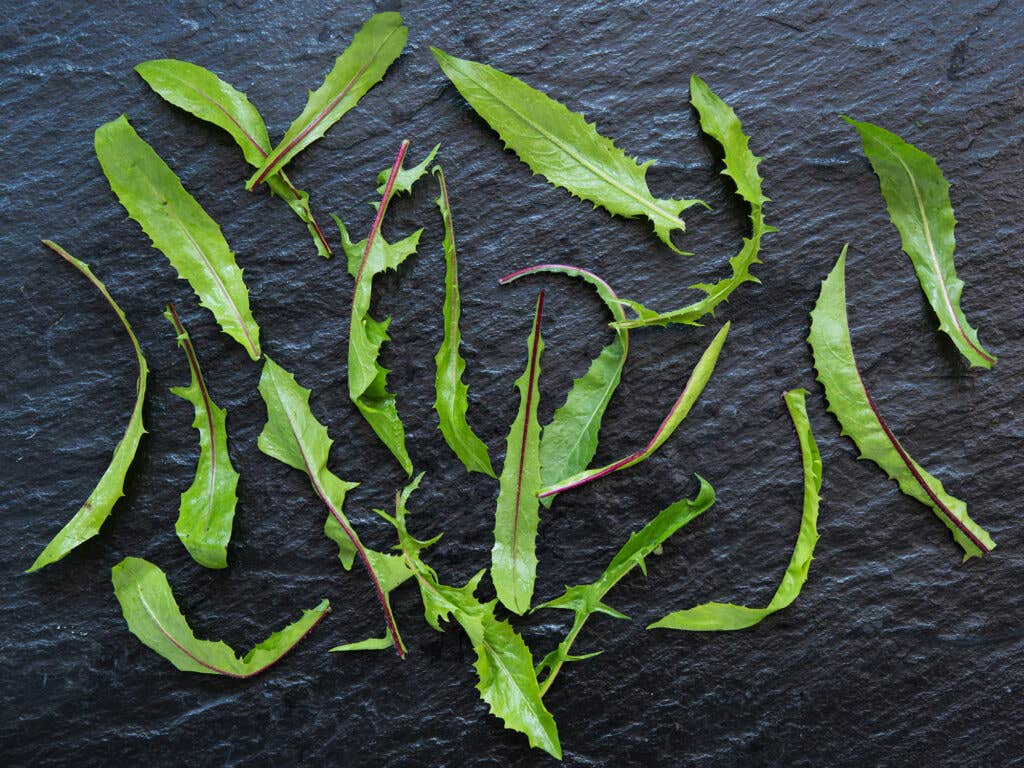
Dandelion greens we think of when we think of dandelion greens are native to Greece, but several varieties grow around the world. The greens pop up at farmers markets during spring and summer.
The larger leaves are fibrous and taste bitter and tannic (in a nice way); they stand up nicely to warmed dressings and can handle being cooked. Keep the little ones, which have less bite all-around, raw. They’re perfect for making salads more interesting with a slight bitter edge.
What to Cook With It
Frisee
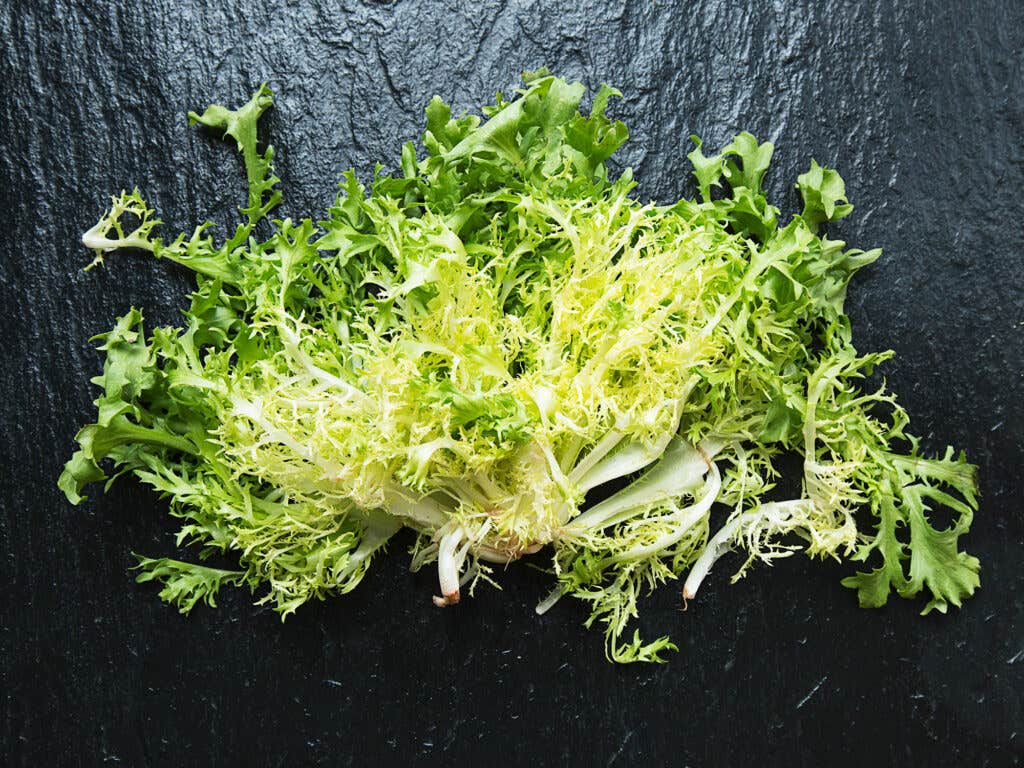
AKA: Curly Endive
Frisee has bright green leaves that fade to white at their core. The lacy leaves are tender and mildly peppery. It grows in mild and cold climates, so it's possible to find it in various regions. Look for it from winter to early spring.
What to Cook With It
Lamb's Quarter
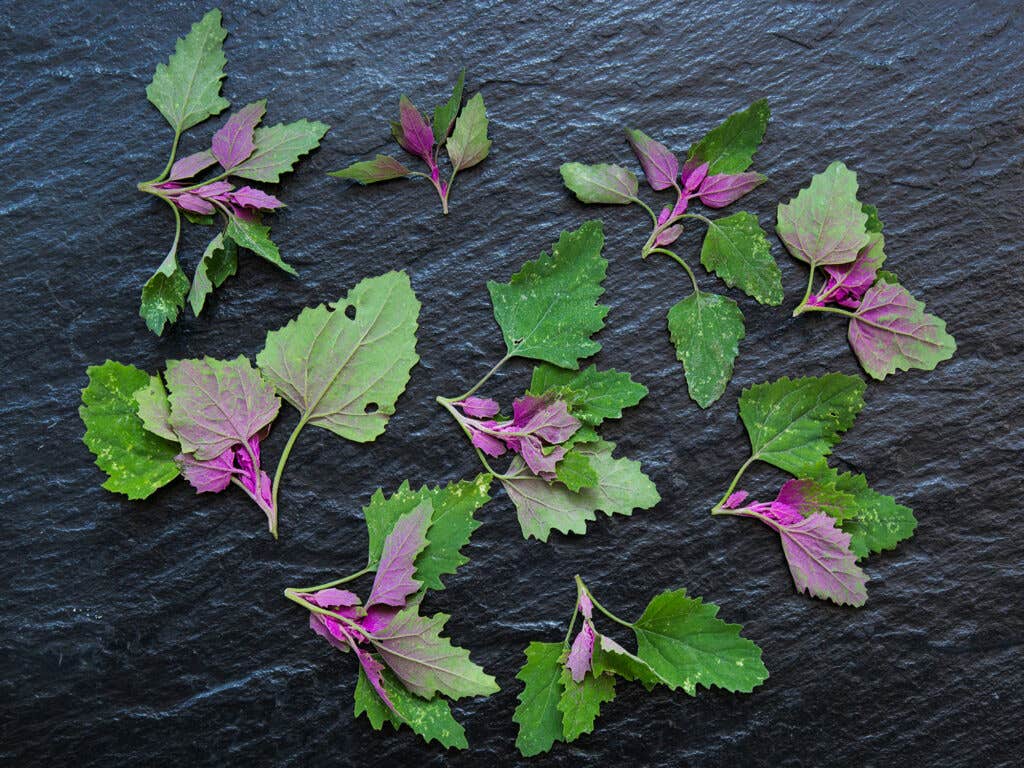
AKA: Wild Spinach, Magenta Spreen, Tree Spinach, Goosefoot
Lamb's quarter is a relative of spinach. It grows throughout North America and is commonly regarded as a weed; that low regard means it pops up randomly at farmers markets from April to October. Some varieties are lucky enough to have a pretty dusting of magenta at the base of their leaves. Keep them raw, and use them to make any salad prettier. Once cooked, the magenta fades.
Lamb’s quarter tastes a lot like spinach: earthy and mineral, but without the metallic tang. The leaves are velvety and drier, more fibrous than common spinach. If you want to cook lamb’s quarter, treat it just like spinach. For dishes like spanakopita, the lower moisture content is ideal.
What to Cook With It
Mizuna
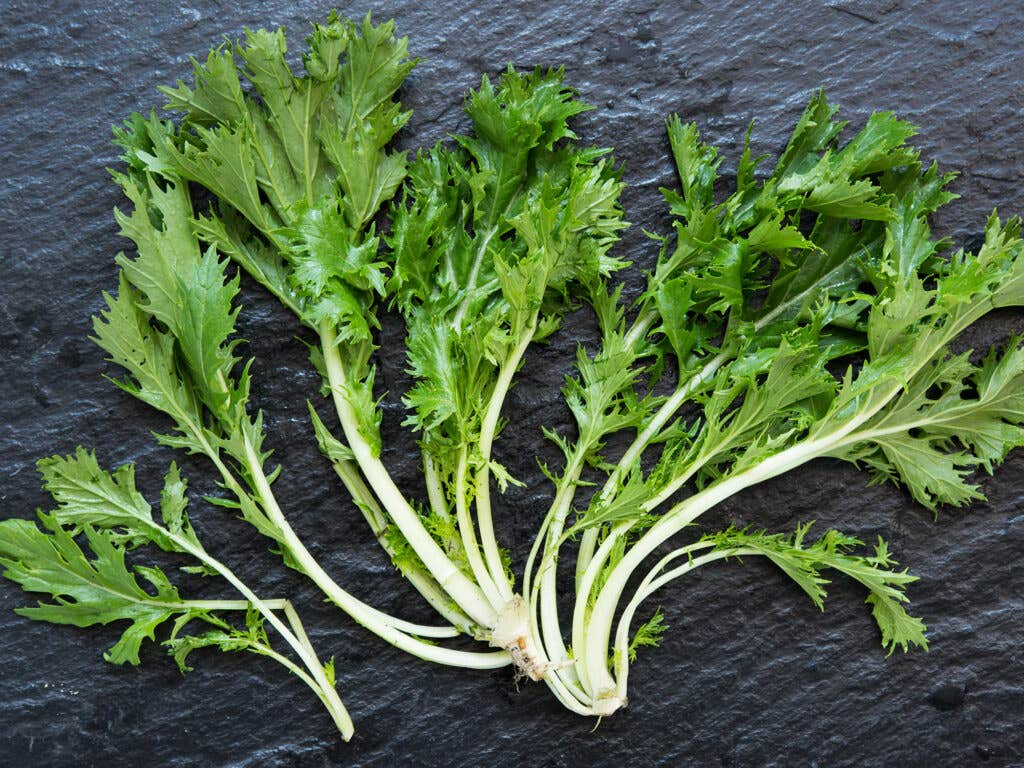
Mizuna is a Japanese mustard green that can be found in various climates (it can tolerate sub-zero temperatures as well as extensive rain and heat) throughout the world. It can be found year-round, but its peak season is fall. It tastes mildly nutty and peppery, a great addition to salads, and is often included in mesclun mixes. There are several known varieties of mizuna, all varying in texture, color, and intensity of flavor, so give yours a taste to see what it needs.
What to Cook With It
Green Salad with Shallot Vinaigrette »
Pappardelle over Wilted Greens »
Mixed Green Salad with Sichuan Peppercorns »
Purslane
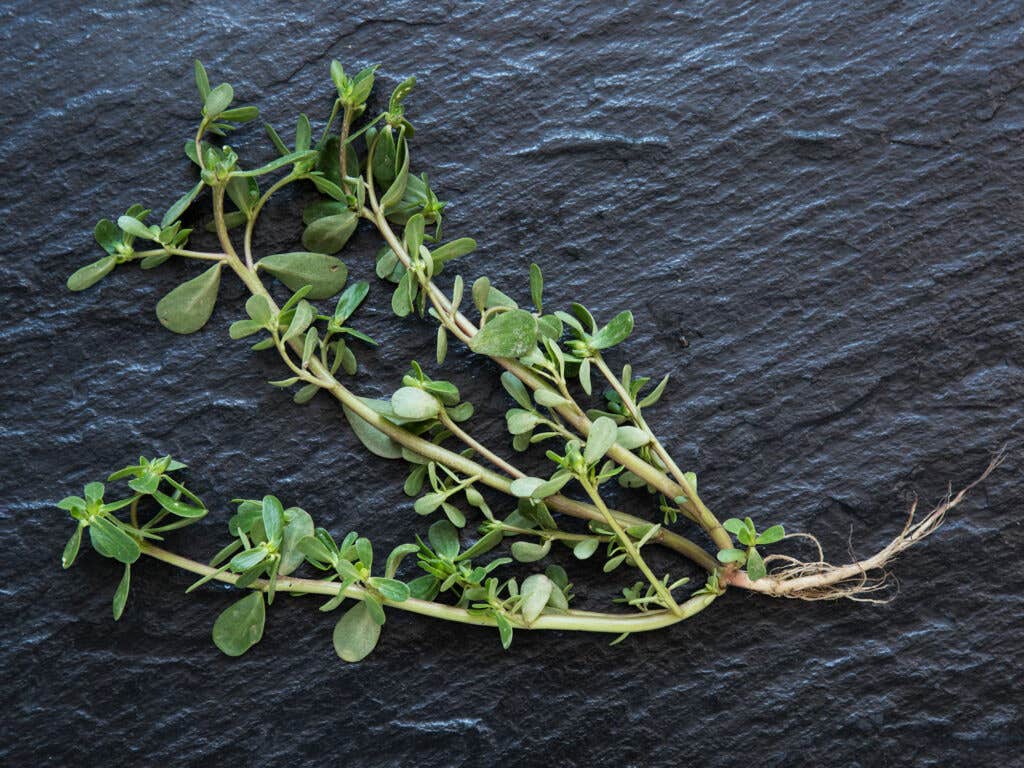
AKA: Pursley, Verdolagas
Purslane is a succulent that grows all over the world. It pops up naturally in most organic gardens. In North America it's considered a weed, but in most other countries it's treated as an ingredient. Purslane tastes mildly salty with notes of citrus and has a tart finish. The whole plant is edible—the leaves and stems are equally delicate and crunchy. Look for it during the summer months.
What to Cook With It
Red-Veined Sorrel
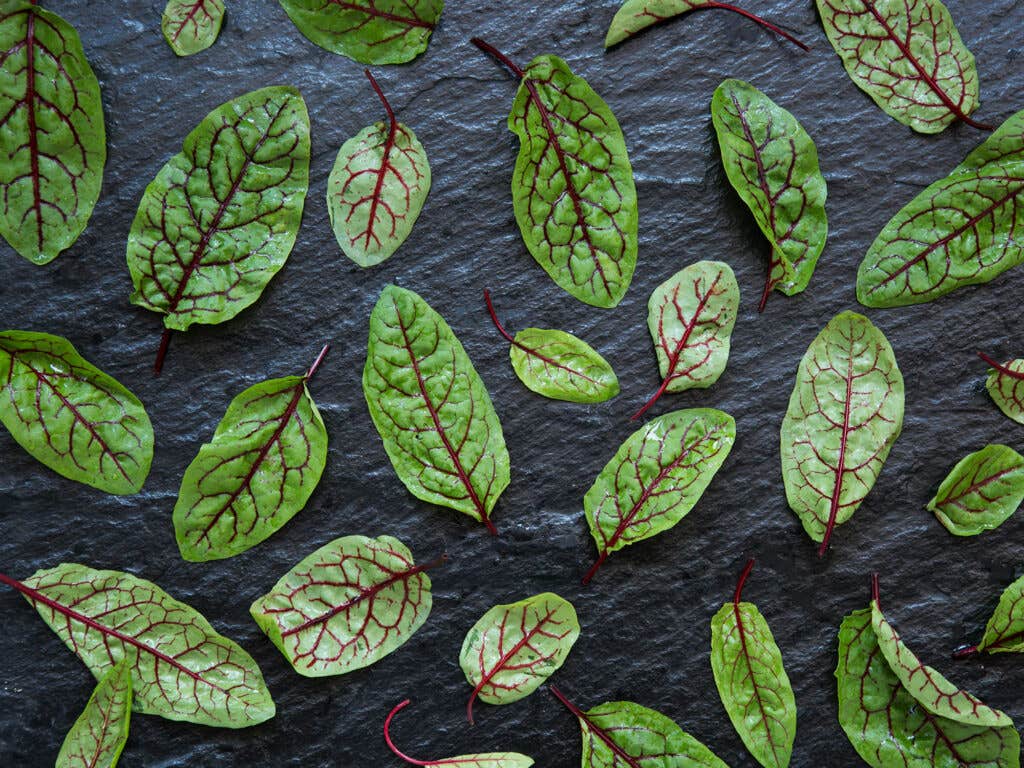
AKA: Field Sorrel, Sheep's Sorrel, Sour Weed
A relative of rhubarb, sorrel has a bright, tart and citrusy flavor perfect for livening up salads. There are many varieties of sorrel, but few are as striking as these red-veined leaves. Cultivated sorrel is available year-round, with spring and summer being the peak seasons. Wild sorrel is in season from early summer to fall. It grows throughout the United States, southeastern and central Europe, Great Britain, and can tolerate cold as far North as Scandinavia and Iceland.
What to Cook With It
Spigarello
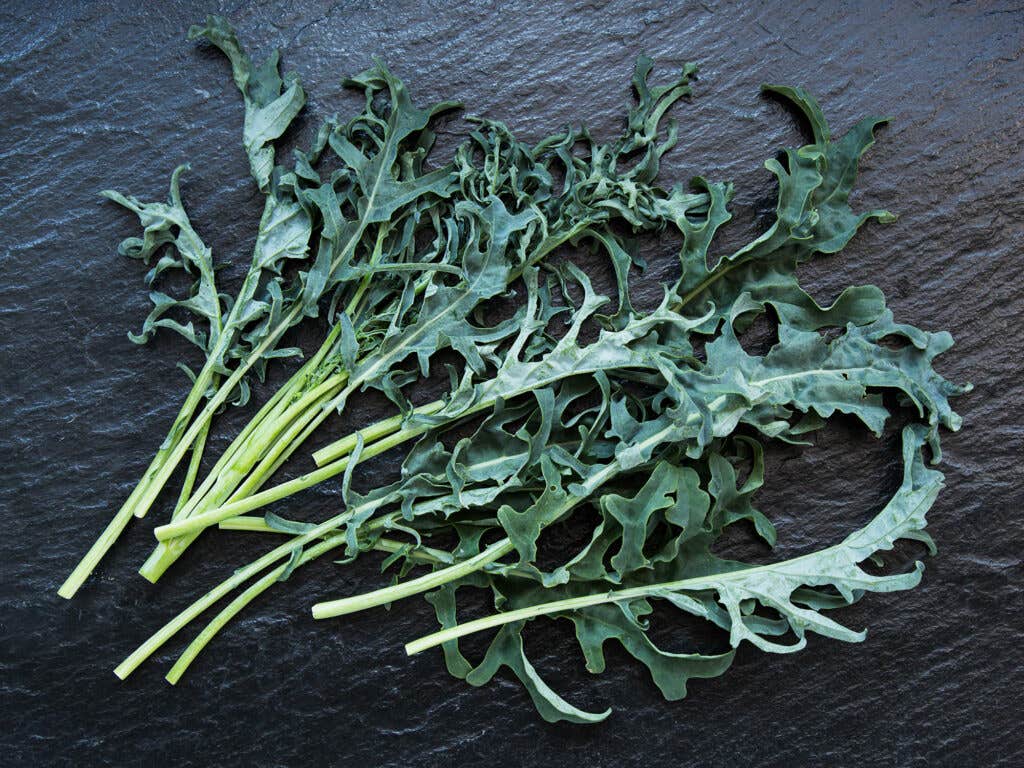
AKA: Cima di Rapa, Spigariello
Spigarrello broccoli is an heirloom variety considered to be the mother to broccoli rabe. Native to Italy, the seeds made their way to North America in the late 20th century. Spigarello can grow in most regions, and its peak season is midwinter through spring (though it can pop up randomly during other times of the year).
It tastes slightly grassy and sweet, with a succulent and crunchy texture. You can treat it just like cavolo nero (lacinato kale): soups, sautées, and of course salads, especially those with anchovy dressings. If you’re making a salad, though, be sure to separate the curly leaves from the stems.
What to Cook With It
Sucrine Lettuce
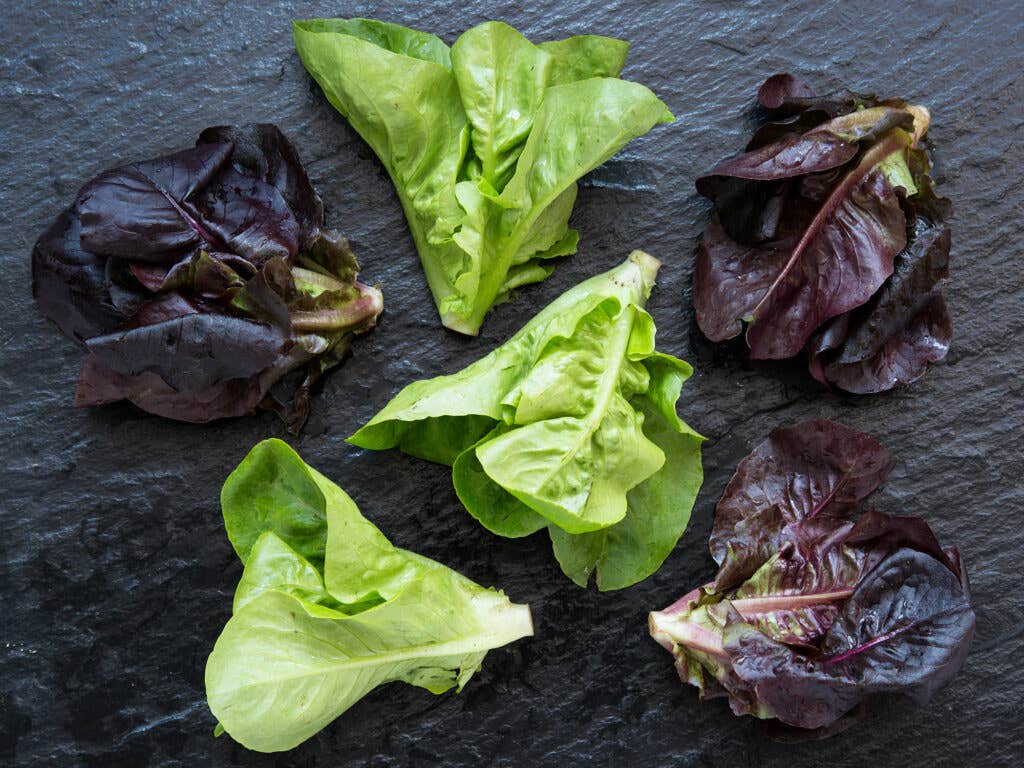
AKA: Sweet Gem, Little Gem (the variety of lettuce is Sucrine, the gem names are trade names)
Sucrine lettuces are the perfect mix of Bibb and Romaine, They're sweet, tender, and just the right combination of textures (crunchy ribs, delicate leaves). These lettuces are fine mixed in with other greens, but really should be allowed to stand on their own. No need to cut them into smaller bites, either. The leaves are especially good at holding dressings in their ridges.
What to Cook With It
Brenta Chicory
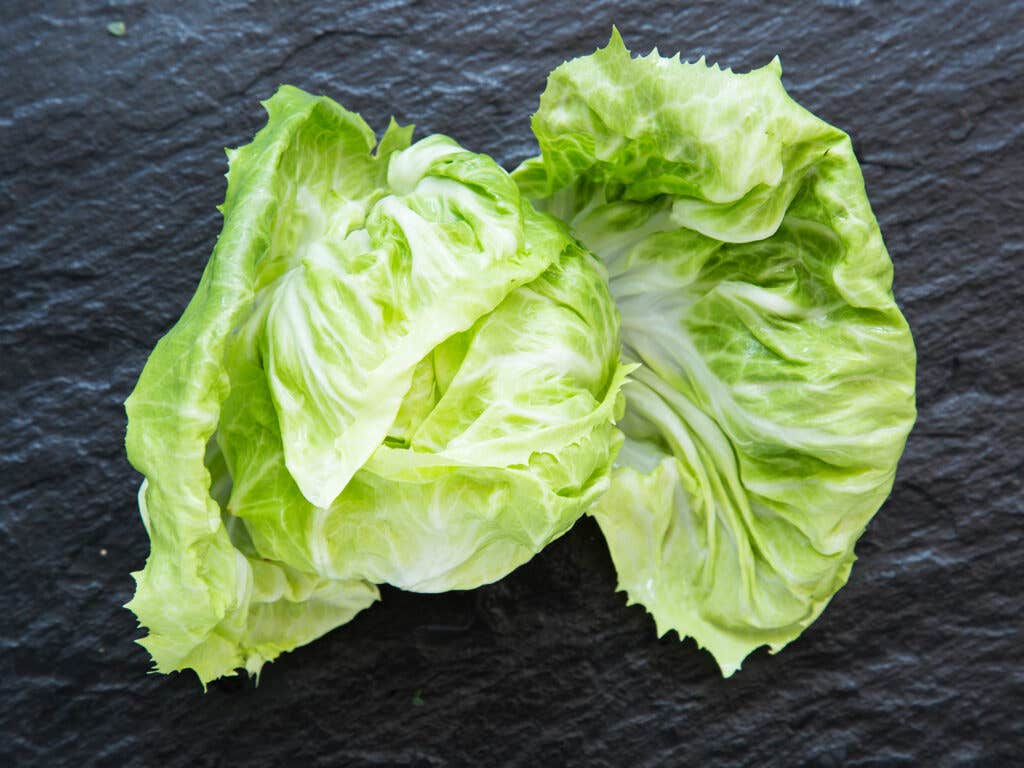
This chicory is especially rare. It’s fussy to grow, and not many farmers bother with it (or even know what it is). It’s an Italian heirloom variety and looks mild and gentle, like an illustration in a Beatrix Potter story. But its looks are deceiving: this is one very bitter chicory. This is the kind of produce that makes shopping at farmers markets so fun.
In New York, it’s grown specifically for chef Dan Kluger, who wanted a chicory that looked like iceberg to use in a wedge salad. A local farmer found something that fit the bill and grew it just for him—and even named it after him at his market stall. This year, “Dan’s chicory” was only at the market for one week—the crop yielded very little due to weather.
What to Cook With It
Red Oak Leaf Lettuce
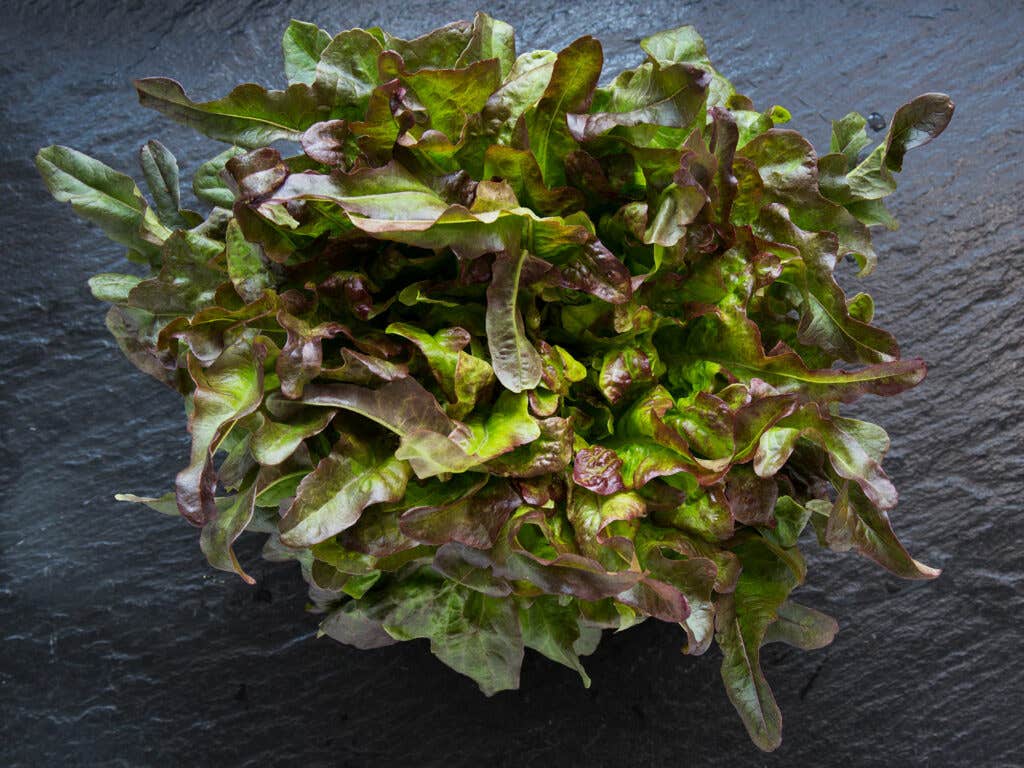
The name of this lettuce couldn’t be a more accurate description for its variety. The burgundy leaves are shaped like oak leaves. They’re buttery and tender and taste nutty and sweet. They go well with any other salad green, and stand on their own just as nicely. Find them at farmers markets in the spring and summer.
Keep Reading
Continue to Next Story










